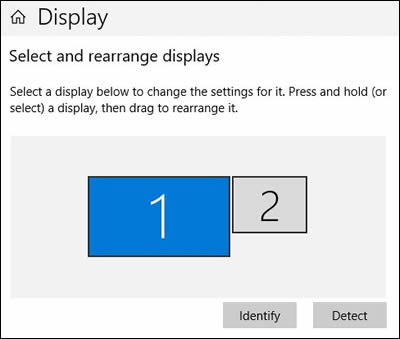-
×InformationNeed Windows 11 help?Check documents on compatibility, FAQs, upgrade information and available fixes.
Windows 11 Support Center. -
-
×InformationNeed Windows 11 help?Check documents on compatibility, FAQs, upgrade information and available fixes.
Windows 11 Support Center. -
- HP Community
- Desktops
- Desktop Hardware and Upgrade Questions
- Install NUC mini pc using provided adapter on HP Full HD 32”...

Create an account on the HP Community to personalize your profile and ask a question
12-05-2019 12:09 AM
Can anybody help me find a set of schematics or drawing to help me install my Intel NUC mini pc to the back of mine HP Full HD (value) Monitor. Where most monitors or displays have four bolt holes on the back this one has none, only two rubber grommets at the top and I have no idea what’s behind them.
Solved! Go to Solution.
Accepted Solutions
12-07-2019 02:31 PM
@2Little2Late67
Thank you for posting on the HP Support Community.
Computers and TVs have a wide variety of video connection types. The video connection on your computer must match the connection on your TV or monitor.
-
Select a connection type based on your second monitor.
-
Monitor: VGA
 or DVI
or DVI  cable
cable -
TV: Video (composite)
 or S-video
or S-video  cable
cable -
High Definition TV: DVI
 or HDMI
or HDMI  cable
cable
-
-
Connect the TV or monitor to the computer using the cable you chose.
-
Connect a power cable to the TV or monitor, and then turn it on.
-
TV connections only: Change the TV video input source to match the video source connection from the computer (Line-1, Video-1, HDMI, etc.). Refer to documents that came with the TV for instructions.
Depending on the TV, the image quality might not be as good as that of a monitor.
-
Turn on the computer.
Next, configure the display with Windows:
Extend or duplicate the desktop with a second monitor.
-
Right-click anywhere on the desktop, and then click Display settings (Windows 10) or Screen Resolution (Windows 8).
-
Make sure the correct number of monitors displays.
Windows 10

Hope this helps! Keep me posted for further assistance.
Please click “Accept as Solution” if you feel my post solved your issue, it will help others find the solution.
ECHO_LAKE
I am an HP Employee
12-07-2019 02:31 PM
@2Little2Late67
Thank you for posting on the HP Support Community.
Computers and TVs have a wide variety of video connection types. The video connection on your computer must match the connection on your TV or monitor.
-
Select a connection type based on your second monitor.
-
Monitor: VGA
 or DVI
or DVI  cable
cable -
TV: Video (composite)
 or S-video
or S-video  cable
cable -
High Definition TV: DVI
 or HDMI
or HDMI  cable
cable
-
-
Connect the TV or monitor to the computer using the cable you chose.
-
Connect a power cable to the TV or monitor, and then turn it on.
-
TV connections only: Change the TV video input source to match the video source connection from the computer (Line-1, Video-1, HDMI, etc.). Refer to documents that came with the TV for instructions.
Depending on the TV, the image quality might not be as good as that of a monitor.
-
Turn on the computer.
Next, configure the display with Windows:
Extend or duplicate the desktop with a second monitor.
-
Right-click anywhere on the desktop, and then click Display settings (Windows 10) or Screen Resolution (Windows 8).
-
Make sure the correct number of monitors displays.
Windows 10

Hope this helps! Keep me posted for further assistance.
Please click “Accept as Solution” if you feel my post solved your issue, it will help others find the solution.
ECHO_LAKE
I am an HP Employee
